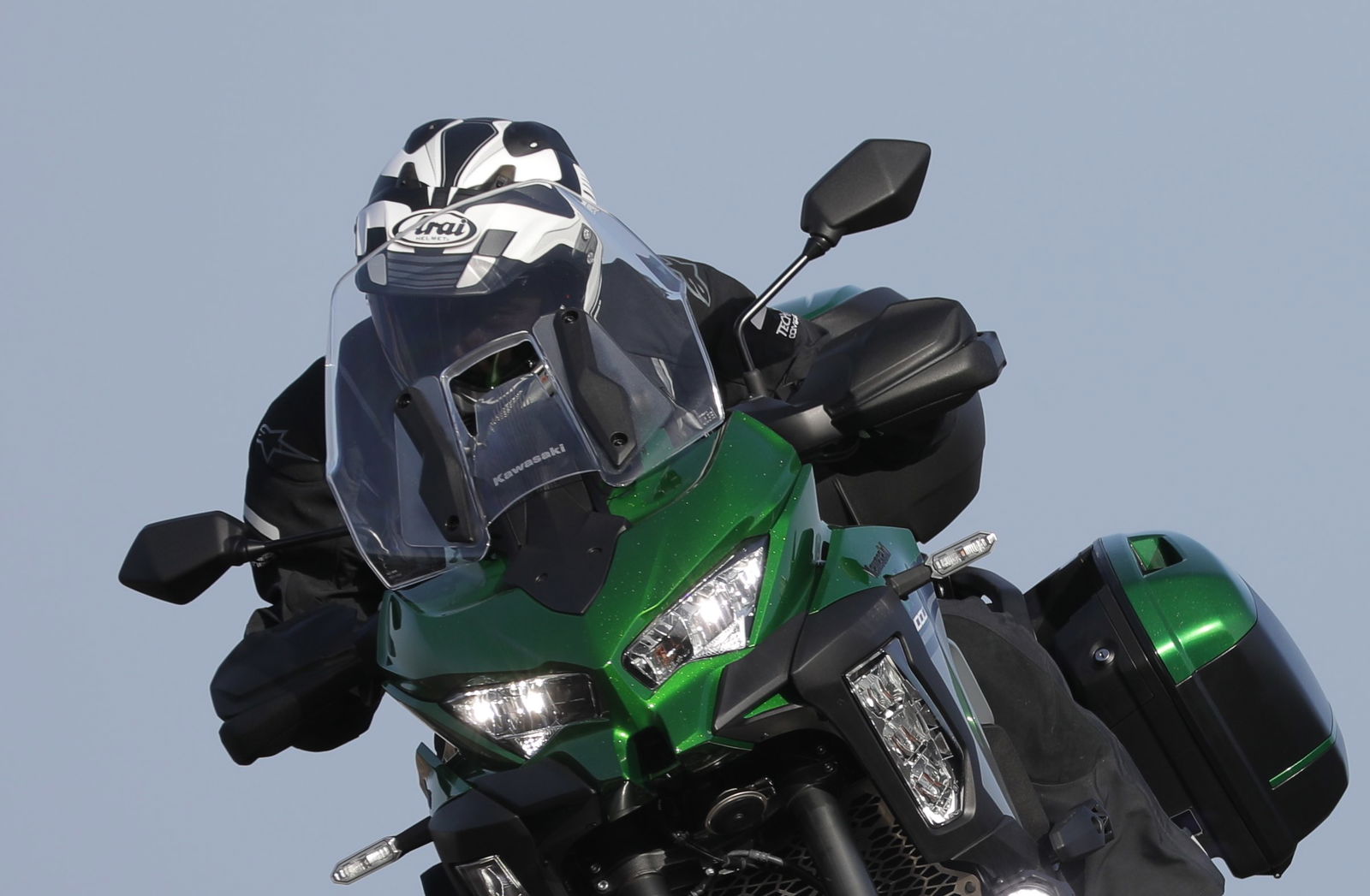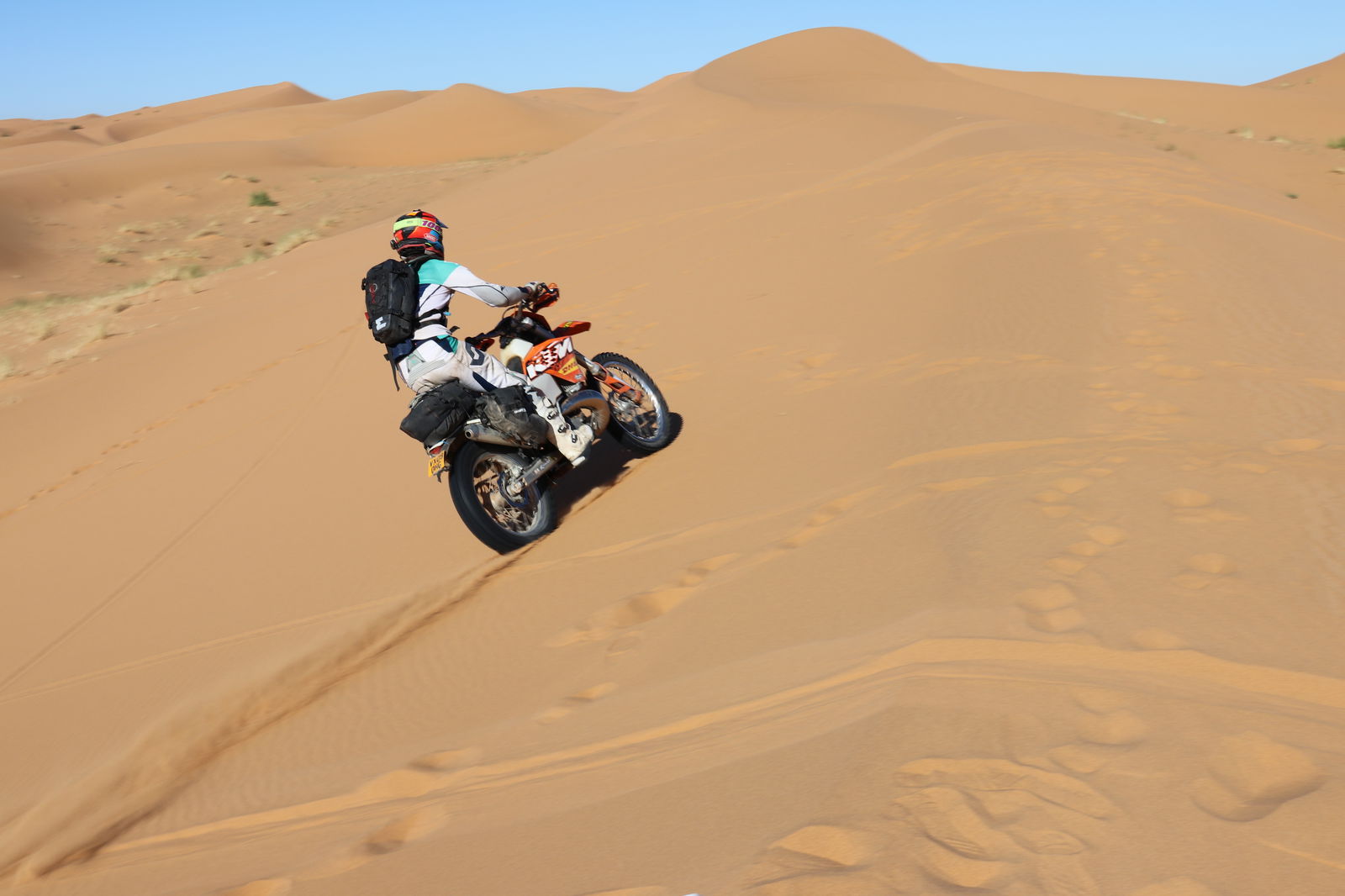Review: Sena SF4 Intercom system
This robust, reliable and user-friendly piece of kit is well worth the £189.99 price tag...

Robust,
Reliable,
Noise cancelling technology
FOR AS LONG AS I’ve ridden a motorbike, I’ve been anti-intercom. The reason being, when I’m riding it’s my time. I don’t want to answer the phone, or listen to tinny tunes on repeat. No, I like to switch off and just enjoy the ride.
But when Leo and I began taking on longer tours, the topic kept popping up. As a technophile, he was always keen to try out the latest in motorcycle communications, while I remained firmly against the perceived invasion of my privacy.
Plus, I argued, it would be better for our relationship if we could enjoy something together without having to talk ALL the time. That one fell on deaf ears.
I can name countless occasions where intercoms would have come in extremely useful – when we took separate exits on the autoroute north of Bordeaux, and then later on that same trip when we became separated on a one-way system in Gibraltar; when the KTM 2-stroke ran out of fuel and I was left sat in the pissing rain while Leo made his way home and then when he decided to plant himself (and the bike) upside down in the trailside shrubbery. The list goes on…
Eventually, after a particularly difficult attempt at gaining his attention on a Welsh adventure, I finally gave in. With just a week to go before we were due to set off on our Moroccan dirt bike epic, I dropped a call to Sena, the undisputed king of bike-to-bike communications.
Now, while Sena doesn’t make a dirt-bike specific intercom, I was recommended the SF4, a compact, battery-efficient unit, which fitted easily to my helmet via a ‘quick clamp’. Leo’s angular Shoei wasn’t so easy, however, and he had to resort to the sticky mount that was also included in the box. Nonetheless, the system was easy to install, with the speakers tucking in easily in between Leo’s cheek pads, while I inserted them into the Arai’s slightly meatier padding. We stuck the inobtrusive microphones velcro pad to the side of the mouth vents and after charging the slim, pebble-shaped intercoms the system was ready to go.
Instead of taking the time to get accustomed to the intercoms before we left, we dived straight into the deep end, testing them out on the first ride of our trip. After the obligatory faff trying to connect the two – press and hold both middle buttons for 4 seconds then press one button once – we eventually connected.
With just three large, easily-distinguishable buttons the SF4 is a doddle to use. The front and rear buttons operate the volume, while the centre does a variety of different functions, depending how long you press it for, and if you press it in conjunction with the other buttons.
The SF4 can connect up to four riders, and allows them to listen to music and use the intercom simultaneously using its Audio Overlay feature. Due to the nature of our trip, we didn’t test out the music, FM radio or telephone call facilities.
In between the dune-topped cliff face and raging seas of Morocco’s famous Plage Blanche, we opened our throttles and rode flat out to the south, where 40km of deserted beach lay in wait.
With the roar of the ocean, rush of the wind and whining engines of our two KTMs, I fully expected not to be able to converse on the go, despite the device boasting an advanced noise cancellation function. After all, we both had lightweight motocross helmets on, which offered very little in the form of sound deadening.
But surprisingly, Leo’s whoops of joy came through loud and clear, and seconds later I heard his pained grunt as the front dug in and he flipped over the bars. Of course, he caught me cracking up as he sheepishly dusted himself down and climbed back on.
Undeterred, we carried on, eventually working up to fifth gear and top speed on the damp, compact sand. Even then we could just about hear one another – providing we declutched and killed the revs for a second. Leo could hear me better than I could him, because he had no fabric covering the speakers inside his helmet.
We rode for hours that day, covering 40km along the beach, and then the same distance back in the dunes on the top of the cliff. By the time we returned to the van the sun had set, but the battery on the intercoms was still going strong. Sena claims 13 hours of talk time, and while we didn’t quite reach that on our first ride, an overnighter in the desert later in the trip allowed us to put this claim to the test (spoiler: it’s true).
Most of our charging was done on the go, from two USB ports in the van’s dash. The devices charged fully well within two hours, consolidating Sena’s claim that 30 minutes of charging equals four hours battery life.
Another thing that impressed us was the robustness of the devices and their mounts. On multiple occasions during our trip, we both had unplanned rendezvous with the ground. After glancing my head off one deceivingly solid patch of sand, I was convinced the intercom would be damaged beyond repair. In actual fact, all that had happened was the rear rubber door covering the charging port had popped open and the socket had filled with sand. Surprisingly, after blowing it out the device charged as normal.
Sena claims operating temperatures of between -10˚C to around 55˚C. While we didn’t get anywhere near the hotter extreme (my body temp probably did though), temperatures in the Sahara fell to almost minus 10 overnight, and despite leaving the devices out in this cold, they suffered no ill effect, with the lithium polymer battery retaining plenty of life the next day.
Range, meanwhile, is a stated 1.2 km (0.8 miles) in ‘open terrain’. This seemed to be pretty accurate on Morocco’s wide plains and empty beaches, however the peaks and troughs of the Sahara were a different story. We could go from clear conversation as we accelerated up a dune, to broken stutters as one of us dropped over the other side. We’d always catch the other’s scream at the unexpected steepness of the descent, however.
Luckily we rode close together for the most part, and once we realised that the Bluetooth would not work through several hundred tonnes of sand (hardly surprising, really), it wasn’t an issue. Incredibly given our track record, we didn’t get separated from one another once during the two week trip – a true testament to the Sena SF4.
For more information on the SF4, or to buy your own, click here.

